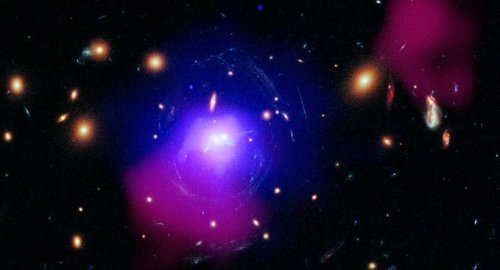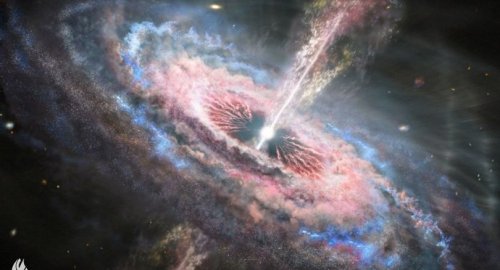
This speed-eating black hole is breaking the laws of physics

- 6-11-2024, 09:15
INA- SOURCES
n a discovery that challenges our understanding of the cosmos, astronomers have found what could be described as the universe’s hungriest black hole – one that’s breaking fundamental physics by consuming matter at an astonishing rate, over 40 times what scientists thought possible.
Using NASA’s advanced James Webb Space Telescope (JWST) and Chandra X-ray Observatory, researchers have spotted this cosmic glutton, known as LID-568, in action when the universe was just 1.5 billion years-old – practically its infancy, considering the universe is now about 13.8 billion years-old.
“This black hole is having a feast,” says Julia Scharwächter, an astronomer at the NSF’s NOIRLab who co-authored the study published in Nature Astronomy.
To understand just how extraordinary this discovery is, imagine a buffet with a strict limit on how much food you can pile on your plate based on your size. In the cosmic realm, black holes have a similar limit – called the Eddington limit – which determines how fast they can consume matter before the forces involved become unstable. This newly discovered black hole isn’t just exceeding its limit; it’s demolishing it by consuming matter at 40 times the expected rate.
The research team, led by astronomer Hyewon Suh, made this discovery through a clever use of technology. They first identified LID-568 through X-ray observations, which showed it was unusually bright. However, the black hole was completely invisible in regular light, making it challenging to study. This is where JWST’s superior infrared vision came into play, allowing astronomers to peer through the cosmic dust and observe the black hole’s feeding frenzy in unprecedented detail.
What makes this discovery particularly significant is that it might help solve a long-standing cosmic mystery: how did supermassive black holes manage to grow so enormous so quickly in the early universe?
“Owing to its faint nature, the detection of LID-568 would be impossible without JWST. Using the integral field spectrograph was innovative and necessary for getting our observation,” co-author Emanuele Farina explains in a media release.
The observations revealed powerful outflows of gas surrounding the black hole, suggesting that a significant portion of its growth may have occurred during a single episode of rapid feeding. Think of it like a cosmic growth spurt, where instead of growing steadily over time, the black hole gained much of its mass in one extended binge.
The team plans to conduct follow-up observations using JWST to better understand how this black hole manages to maintain such an extreme feeding rate without becoming unstable. Their findings could revolutionize our understanding of how the universe’s largest black holes came to be, suggesting that these cosmic titans might have grown through periods of extreme consumption rather than steady, measured growth.
This research marks another breakthrough in our understanding of the early universe, demonstrating that even fundamental physics can sometimes be bent in ways we never expected. It seems that when it comes to cosmic appetites, some black holes don’t just break the rules – they devour them.
SOURCE: Study Finds
Al-Sistani: Tomorrow, the 29th of Ramadan
- Local
- 25/03/29
Al-Amiri warns of any war between Iran and the US
- politics
- 25/04/01












